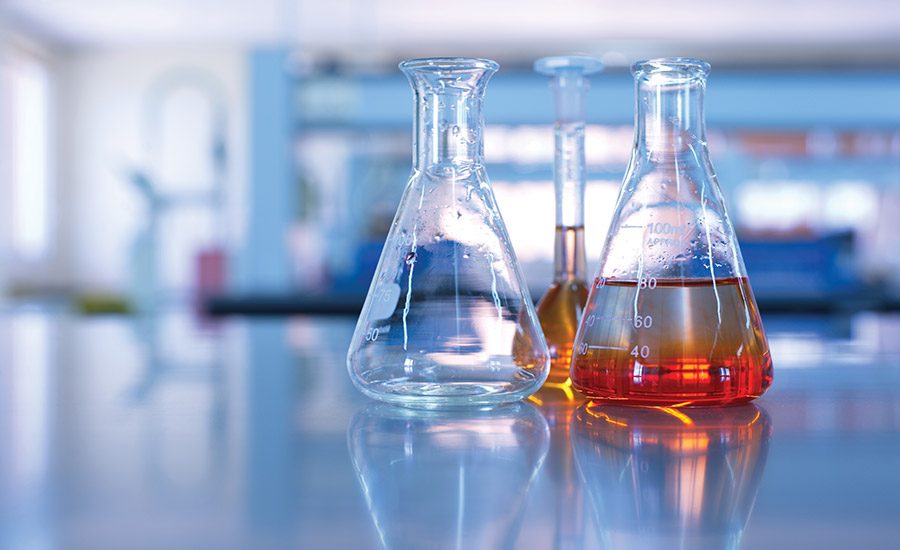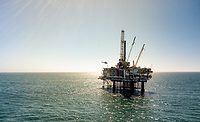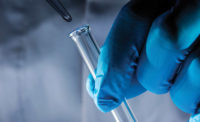The global specialty chemicals market is expected to reach $1.79 trillion by 2025, according to a recent report by Grand View Research Inc.1 The growing popularity of high-value chemicals that are crucial to developing novel products is reportedly a major driving factor for the industry. Specialized and advanced features of these compounds offer a significant advantage in comparison with commodity products, since the former are formulated on the basis of unique performance characteristics for specific applications in the construction, automotive, electronics, agriculture, and other sectors.
International chemical authorities are widely advocating the passage of free trade agreements, such as the Transatlantic Trade Investment Partnership (TTIP) between the U.S. and Europe, which is expected to foster manufacturing and trade of these products. Recovery in housing starts and rebounding growth of the automotive sector in North America are also impacting market dynamics.
Construction chemicals accounted for 12% of the volume share in 2016, and are expected to emerge as the fastest-growing segment, with an over 5.7% compound annual growth rate (CAGR) from 2017-2025. The steady demand for residential projects and public infrastructure in emerging economies remains a key driving factor for compounds used in the production, maintenance, and repair of building components. Electronic chemicals are projected to remain an important and fast-growing segment, due to integration of miniaturized electronics in automobiles, development of solar-powered devices, and rapid digitalization across emerging economies.
The global specialty chemicals market exceeded 260 million tons in 2016, and is expected to grow at a CAGR of 5.1% from 2017 to 2025. The coatings, adhesives, sealants and elastomers (CASE) sector is growing at a CAGR of over 5%, reportedly due to high demand for specialty adhesives, coatings, and other materials in high-performance applications.
Automotive applications are forecast to increase at a 6% CAGR from 2017 to 2025. Automation in assembly and other OEM processes is expected to contribute to an increase in production levels, which is, in turn, likely to foster higher chemicals industry revenue.
Regionally, Asia-Pacific is anticipated to increase at the highest pace, due to rapidly expanding automotive and electronics sectors, along with a steady rise in industrial output in recent years. In addition, low-cost labor and vast material resources are contributing to growth in the region, as foreign players make advances and investments in emerging nations.
Polymer Dispersions
The polymer dispersions market is projected to grow from an estimated $6.99 billion in 2017 to $10.27 billion by 2022, at a CAGR of 8%, according to a study from MarketsandMarkets™.2 The market is being driven by the growing demand for polymer dispersions in various decorative and protective coating applications, especially in the “green” coating applications.
Acrylic dispersions make up the largest resin type sub-segment of the polymer dispersions market because of its wide usage in manufacturing dispersions for various applications. Growth of this segment is due to the need to follow mandatory environmental protocols related to low volatile organic compounds (VOCs) and ecolabels such as M1, Blue Angel, and EMICODE.
Decorative and protective coatings applications are expected to dominate the polymer dispersion market during the forecast period. Rising disposable income is driving the demand for high-quality furnishings, upholstery and carpets for better-looking home and automotive interiors. This is boosting the demand for polymer dispersions for decorative and protective coating applications.
The polymer dispersion market is led by North America and Asia-Pacific. Asia-Pacific is the fastest-growing region in the global polymer dispersion market, with growth centered in India and China. In emerging markets, such as the Asia-Pacific and South America, the decorative and protective coating application is projected to drive the market. This is due to changing consumer awareness, increasing government regulations, and increasing adoption of the green coating application.
Vinyl Acetate
The global vinyl acetate market is projected to grow at a CAGR of 5.32% during 2017-2021, according to a report from Research and Markets.3 Vinyl acetate is increasingly being used in adhesives in food packaging. The growing demand for ethylene vinyl alcohol (EVOH) films from the food manufacturing industry is projected to spur the demand for vinyl acetate monomer. The changes in lifestyles of the urban population worldwide have promoted the use of packaged food in the past few years, thus increasing the need for packaging and expanding the market for vinyl acetate products.
Vinyl acetate products are used in various food and beverage rigid packaging. The growth of the rigid packaging segment will reportedly increase the consumption of these adhesives significantly. The rise in disposable income and the growing demand for packaged beverages and foods are boosting the market demand. Packaging for fish, meat, poultry, snacks, and pet food requires advanced flexible packaging.
Isoprene
The isoprene market is projected to reach $2.96 billion by 2021, growing at a CAGR of 7.4% from 2016-2021, according to a study from MarketsandMarkets.4 Isoprene, a colorless volatile liquid obtained by thermal cracking of naphtha and other petrochemicals, is used alone or in combination with other compounds to make polymeric materials.
Demand for isoprene is growing in end-use industries such as adhesives, tires, non-tires and others. The growing tire and rubber industries are driving the isoprene market. Isoprene acts as a chemical raw material for polyisoprene, SIS, and IIR. Synthetic rubber is replacing natural rubber in almost every rubber applications; this acts as a driving factor for isoprene market.
The polymer grade type of isoprene is projected to grow at a high CAGR during the forecast period in the isoprene market. This type of isoprene is widely used to produce polyisoprene and isobutylene isoprene rubber. In addition, it is used in medical and pharmaceutical packaging, as well as in products such as rubber bands, footwear, cut thread, baby bottle nipples, hoses, and conveyor belts.
Polyisoprene is estimated to be the fastest-growing segment of the isoprene market during the forecast period. A major driver for polyisoprene applications is the growing tire and automotive industries globally. In addition, polyisoprene is becoming an acceptable substitute for natural rubber in the medical sector, as it provides flexibility and high tensile strength similar to natural rubber, and doesn’t trigger an allergic reaction.
Europe is estimated to be the leading market for isoprene. Russia is projected to be the fastest-growing market for isoprene in the region during the forecast period. Germany, France and the UK are also contributing to the growth of the isoprene market in Europe.
Styrene Butadiene Rubber
The global styrene butadiene rubber (SBR) market is expected to reach $9.9 billion by 2025, according to a new report by Grand View Research Inc.5 A significant increase in the demand for OEM tires from the automobile industry is likely to augment the usage of SBR over the forecast period. In addition, long vehicle life, coupled with a shift in consumer preference toward high-performance tires, is likely to have a positive impact on growth over the next nine years.
Recently, the demand-supply gap for natural rubber (NR) has widened, making the prices of the commodity a matter of concern. In 2016, the supply growth of natural rubber was 1.1%, while demand grew at a rate of about 6%. This deficit has been exerting pressure on suppliers and leading to high price volatility, which in turn has been a major driver for the growth of the SBR industry.
Over the last five years, the average consumption of synthetic rubber has been higher than NR by about 3,500 kt per year. SBR is the highest-consumed synthetic rubber, accounting for over 45% of consumption. Therefore, the restraints faced by the NR industry act as the major drivers for the synthetic rubber market.
The SBR market is driven by rising demand from the Latin America and the Middle East and Africa regions, due to the increasing production of tires and the presence of numerous petrochemical companies across those regions.
Fumed Silica
The fumed silica market is projected to reach $2.26 billion by 2022, growing at a CAGR of 7.1% between 2017 and 2022, according to a report from Research and Markets.6 Market growth is primarily driven by the increasing applicability of fumed silica in industries such as adhesives and sealants, construction, and automobiles. Furthermore, the cost effectiveness of fumed silica compared to precipitated silica is another significant factor driving the growth of the fumed silica market. Adhesives, sealants coatings and inks are considered to be key applications for fumed silica in both emerging and developed economies.
Based on type, the fumed silica market has been categorized into hydrophilic and hydrophobic. The hydrophilic fumed silica segment is the largest type segment of the fumed silica market, both in terms of volume and value. The hydrophobic segment is expected to grow at the highest CAGR during the forecast period in terms of volume. This growth is mainly attributed to the water-repellent properties of hydrophobic fumed silica, which makes it desirable for anti-corrosive applications.
Based on application, the fumed silica market has been segmented into adhesives and sealants, coatings and inks, pharmaceuticals, UPR, gel batteries, and lighting, among others. The growth of the coatings application segment of the fumed silica market is primarily driven by rising demand for water-based coatings from the architectural and industrial applications.
North America, Asia-Pacific and Europe are key regions for the fumed silica market. The market in the Asia-Pacific region is anticipated to grow at the highest CAGR between 2017 and 2022 in terms of value and volume. This growth is mainly attributed to the increasing usage of fumed silica in coatings, adhesives and sealants, UPR, and gel batteries applications.
Lack of awareness regarding the benefits of fumed silica over precipitated silica is expected to restrain the growth of the fumed silica market. In addition, the introduction of biogenic fumed silica, which becomes an alternative to fumed silica, is further restraining market growth.
Silicones in Construction
The global market for silicones in construction applications is expected to climb 5.6% per year to $3.7 billion in 2021, when volume demand will reach 594,000 mt, according to a report from The Freedonia Group.7 Growth will be affected by rebounds in Western Europe, Eastern Europe, and Central and South America, as well as by continued strong increases in construction spending in the Asia-Pacific region and North America.
The Asia-Pacific region will represent over half of additional demand between 2016 and 2021, remaining the largest and fastest-growing regional market for silicones. Rising personal incomes will stimulate consumer demand for more sophisticated and high-performance construction materials.
“Intensity of use in developing regions will remain low overall, however, constraining near-term opportunities for silicone suppliers,” said Zoe Biller, analyst.
Demand for silicones in adhesives and sealants is expected to retain the bulk of sales in construction. However, demand in high-gloss and water-repellent architectural coatings is expanding at a rapid pace, fueled by robust growth in construction spending in the U.S. and a recovery in Western Europe. ASI
References
1. “Specialty Chemicals Market Worth $1.79 Trillion by 2025” (published June 2017), Grand View Research Inc., www.grandviewresearch.com.
2. “Polymer Dispersions Market by Resin Type (Acrylic, SB, Vinyl, Polyurethane), Application (Decorative & Protective Coating, Paper, Printing Ink, Carpet and Fabrics, Adhesives and Sealants), and Region-Global Forecast to 2022” (published December 2015), MarketsandMarkets, www.marketsandmarkets.com.
3. “Global Vinyl Acetate Market to Grow at a CAGR of 5.32% by 2021-Rising Industrialization in APAC Leading to Demand for Vinyl Acetate” (published March 2017), Research and Markets, www.researchandmarkets.com.
4. “Isoprene Market by Type, Application, End-Use Industry, and Region-Global Forecast to 2021” (published April 2017), MarketsandMarkets, www.marketsandmarkets.com.
5. “Styrene Butadiene Rubber (SBR) Market Analysis By Product (E-SBR, S-SBR), By Application (Tire, Footwear, Polymer Modification, Adhesive), By Region (North America, Europe, Asia Pacific), and Segment Forecasts, 2014-2025” (published May 2017), Grand View Research, www.grandviewresearch.com.
6. “Fumed Silica Market by Type (Hydrophilic, Hydrophobic), Application (Paints & Coatings and Inks, Adhesives & Sealants, Pharmaceuticals, UPR, Gel Batteries, Lighting), and Region (North America, Asia-Pacific, Europe)-Global Forecast to 2022” (published June 2017), Research and Markets, www.researchandmarkets.com.
7. “Global Silicones Market, 4th Edition” (published June 2017), The Freedonia Group, www.freedoniagroup.com.






